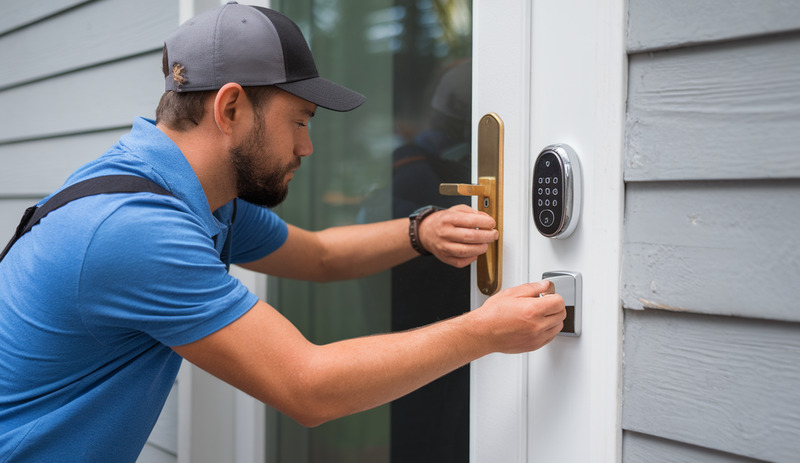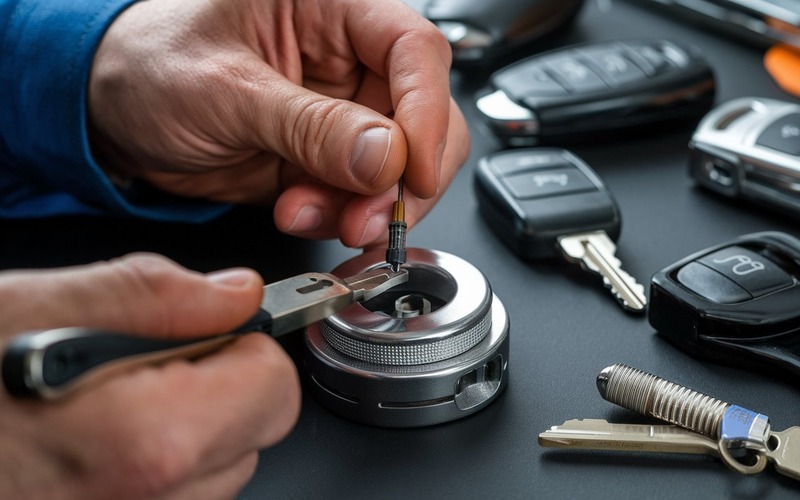
You know that moment when your toddler suddenly becomes a mini-Houdini? One second they’re playing with blocks, and the next, they’re inches away from opening a door to who-knows-where. As a parent, those heart-stopping seconds feel like an eternity.
Every parent knows the drill: kids are curious, fast, and have zero sense of danger. They don’t understand that some doors are off-limits or that some locks exist for their protection. That’s why childproofing isn’t just a suggestion—it’s an absolute must.
Why Lock Safety Matters More Than You Think?
Let’s take a moment to talk about the safety of homes. The majority of parents have no concept of how swiftly an ordinary house can morph into a risk-filled zone just by the presence of an adventurous child. Kids are essentially small, audacious adventurers with no grasp of how to assess danger.
One open entryway or unsecured room could allow access to a trove of potential threats, like corrosive chemicals, razor-edged instruments, or outdoor spaces ideal for hide-and-seek but totally lacking parental supervision.
Consider it from a child’s viewpoint: each shut door is a riddle to be resolved, each cupboard a possible trove of intriguing valuables. What we find unexciting is an exploration empire for an area-restricted toddler or young child.
And believe me, they will tunnel through the potential investigation into every nook and cranny if given the slightest opportunity.
Different Types of Locks for Different Ages
Something that most people don’t realize is this: childproofing isn’t a one-size-fits-all solution. It might work brilliantly for a toddler but be child’s play for a crafty 5-year-old who’s developing problem-solving skills. As kids grow, their ability to outsmart basic locks increases dramatically.
For toddlers (1-3 years), uncomplicated sliding locks or magnetic catches can work well. These keep little hands from getting in but don’t require a lot of work (or thought) to open.
Once kids hit the preschool years (3-5), you’ll need to step up your game. Locks that require a series of different movements are great-but are even better if they’re not a snap to figure out for preschool brains. Smart locks with keypads or that recognize you when you come home can work wonders.
Top DIY Lock Protection Techniques
Now let’s discuss some practical strategies. Your first line of defense is simple sliding locks, but you mustn’t stop there. Go up higher; install locks where little hands can’t reach them. Use cable locks for cabinets, and sliding bolt locks for doors, and you can trust those to hold.
For families skilled in technology, smart home solutions are becoming ever more widespread. Picture locks that send notifications to your phone if someone accesses a doorway, or smart sensors that oversee your home’s security and alert you to possible problems.
These aren’t just cool gadgets-they’re an extra layer of protection that gives homeowners peace of mind. For more comprehensive lock safety solutions, consider consulting professionals.
Warning Signs Your Current Locks Aren’t Kid-Proof
Heed these warning signs. If your offspring continuously circumvents your existing locking mechanisms, it is time to boost your home’s security. Look for signs like your child intently observing how you unlock something, them trying and failing to unlock things (but showing a commendable level of patience), or them working obsessively and endlessly on getting past a barrier you think is secure but that you know your kid will figure out how to get by.
It’s not solely about the padlock-it’s about grasping your particular offspring’s talents and curiosity. What was last month’s effective parenting tool might be this month’s disaster.
When to Call in the Professionals
There are times when do-it-yourself projects are insufficient. This may be true when you’re contending with intricate home designs, several access points, a layout that’s spread out over many levels, or in the instance of a particularly intrepid child. It’s these times when it pays to call in a pro. Check out our location on Google Maps to find local home safety experts.
These professionals can evaluate your home’s one-of-a-kind configuration, pinpoint possible dangers, and suggest all-inclusive locking and security methods. They’ll identify risky situations that might not even occur to the most watchful mom or dad.
Keep in mind that ensuring the safety of locks isn’t about impinging on the freedom of your child—it’s about establishing an environment in which your child can learn and explore without being put at risk by the lock itself. This takes constant creativity and vigilance. Those tiny, determined explorers will always be testing the limits of your solutions!
Childproofing isn’t about creating a fortress-it’s about creating smart, strategic barriers that keep your kids safe while giving them room to explore and grow. Remember, no single solution works for every home or every child.
The key is staying one step ahead, being observant, and understanding that child safety is an ongoing process. It’s not about being perfect; it’s about being proactive.
Take a walk through your home today. Look at your locks with fresh eyes. Ask yourself: ‘If my curious kid were determined to open this, could they?’ Your peace of mind is worth those few minutes of careful inspection.



